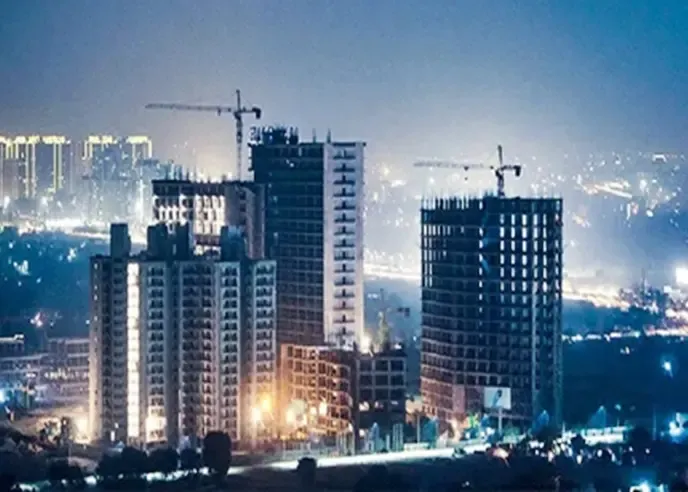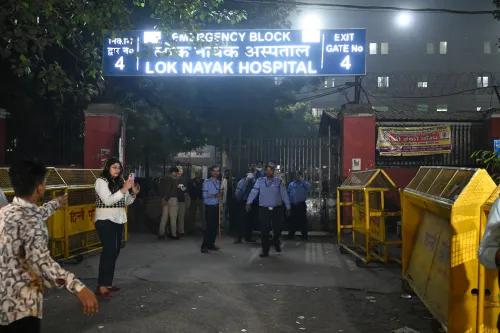Investment Opportunities in India's Real Estate Worth Rs 62,000 Cr Unveiled: Report

Synopsis
Key Takeaways
- Developers acquired 2,335 acres of land valued at Rs 39,742 crore.
- Potential development of 194 million sq. ft requiring Rs 62,000 crore.
- 72% of acquisitions were in Tier I cities; 28% in Tier II and III cities.
- Mumbai Metropolitan Region is the leader in land acquisition.
- 81% of acquired land is for residential development.
Mumbai, March 12 (NationPress) Real estate developers across India have initiated a bold expansion initiative, acquiring 2,335 acres of land valued at a remarkable Rs 39,742 crore in 23 key cities throughout 2024, as per a recent JLL report released on Wednesday.
These strategic land acquisitions have set the stage for the potential development of 194 million sq. ft of real estate, which is expected to require an investment surpassing Rs 62,000 crore, according to the report.
The report notes that while Tier I cities retained their leading position, accounting for 72 percent of land purchases, there was a notable shift towards smaller urban centers as well. Tier II and III cities captured a significant 28 percent share of these acquisitions, equating to 662 acres of land.
This trend indicates a growing acknowledgment of the untapped potential within these emerging markets.
Remarkably, cities such as Nagpur, Varanasi, Indore, Vrindavan, and Ludhiana surfaced as unexpected hotspots during this land acquisition surge.
Their prominence in this year's transactions highlights a broader trend of geographical diversification in real estate development, moving beyond traditional metropolitan strongholds, observes the report.
This strategic shift towards a more balanced urban development model not only mirrors changing market dynamics but also suggests a future where growth is more evenly spread across India's urban landscape.
According to the JLL analysis, the cost of land per acre has risen consistently over the past three years from around Rs 11 crore in 2022 to Rs 17 crore in 2024.
Following the disruption caused by COVID-19, the year 2024 stands out as the best-performing year for real estate across both office and residential asset classes, as evidenced by strong performance indicators in both demand and supply.
With the upward trajectory of the real estate sector continuing, developers are steadily investing in expanding their land bank nationwide for future development projects, the report reveals.
The Mumbai Metropolitan Region (MMR) emerged as the leader in land acquisition for 2024, with developers securing approximately 407 acres through 19 separate deals, representing 17 percent of the total land transactions for the year.
This marks a significant 41 percent increase from the previous year's 288.9 acres.
Noteworthy transactions included single deals of 50 acres or more in micro-markets such as Khalapur, Palghar, and Khapoli.
While the MMR led in terms of land area acquired, the National Capital Region (NCR) outperformed other cities in the number of completed deals, with 36 land transactions throughout the year.
In the NCR, Gurugram saw the highest activity with 21 deals, followed by Noida with 14, and Ghaziabad with one.
“In 2024, as much as 81 percent of the land acquired during the year by developers was designated for proposed residential developments. This could lead to a massive development potential of 158 million sq. ft to meet the ever-increasing housing demand in the country.
Developers are relying on the sustained interest in homebuying in the residential sector as a key priority for enhancing their new supply pipeline,” stated Samantak Das, chief economist at JLL India.
This extensive land acquisition is expected to require a substantial capital investment of Rs 62,328 crore for development, based on current construction costs.
The top 7 cities have emerged as focal points for this real estate potential and are anticipated to attract the majority of the projected capital requirements.
They recorded land acquisitions totaling 1,673 acres. This significant urban land acquisition represents 91 percent of the projected total capital needed for development, highlighting the concentrated focus on major metropolitan areas within the country's real estate landscape, according to the report.
The increase in land acquisitions in Tier II and III cities, while considerable, resulted in a more subdued financial outcome due to lower construction costs and distinct real estate formats.
These emerging urban centers account for merely 9 percent of the total estimated capital required for development, emphasizing the stark contrasts between major metropolitan regions and smaller cities, the report added.









